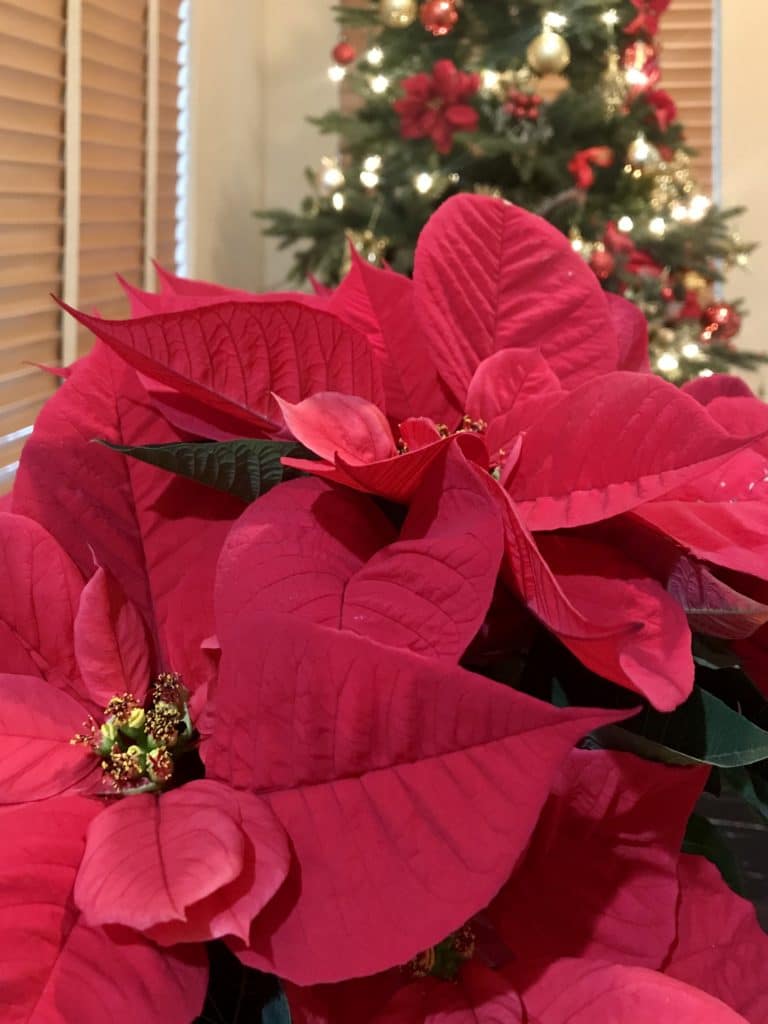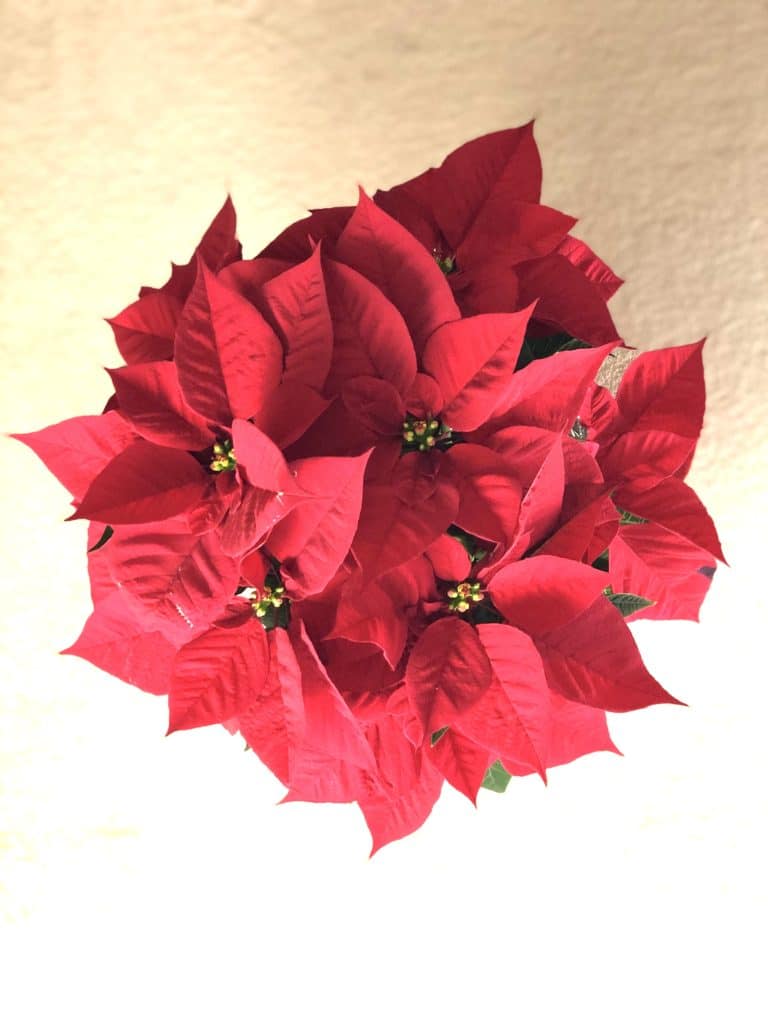How to Care for Poinsettias this Holiday Season
Is there anything prettier than poinsettias during Christmas time? If you love this plant, it’s time to learn how to care for poinsettias so you can enjoy them throughout the holiday season!
It’s such an elegant and striking plant, it’s a shame not to take full advantage of their beauty during this time of year.
Luckily, poinsettias are easy to find – they’re sold in nearly every grocery store and garden center these days. You can find them in a variety of colors such as red, white, yellow, burgundy, and even speckled.

Retailers know how much we love them, so they make them available once mid-November rolls around. This means you can enjoy them in your home on both Thanksgiving and Christmas!
While many people toss their poinsettias at the end of the year, you can actually keep them in your home or yard for the following year but it does take a little more work.
However, because they’re so inexpensive and widely available, most people toss them out at the end of the season, and that’s ok, too. It’s probably the easiest route.
What is a Poinsettia?
Poinsettias are actually small shrubs aka bushes. Poinsettias are perennials that are grown in Mexico, where they can actually reach 15 feet tall! Those are definitely not the kind we’re used to.
Most people think that poinsettias are blooming flowers but they’re actually colorful leaves called bracts that feature tiny yellow flowers called cyanthia that you see in the center.
What’s more, poinsettias are easy to care for. They’re pretty low-maintenance once you know what they need: moist soil, indirect sunlight, and warm temperature.
If you’re a fan of green houseplants, you would probably jump at the chance (like me) to add a little color to your home via blooming plants like poinsettias, anthuriums, and Holiday cactus.

The holiday season is actually the perfect time such colorful houseplants because they actually bloom while other plants and flowers go dormant- it’s perfect timing!
Below I’ll go into detail about the poinsettia, including how to provide the ideal environment so you can enjoy their blooms for as long as possible.
Are Poinsettias Poisonous?
Poinsettias are not poisonous but they can cause vomiting or diarrhea if ingested. Keep them out of reach from dogs, cats, and other pets, as well as small children.
Poinsettias also release a sap that may cause skin irritation if touched, so use gloves when pruning or removing leaves.
As a houseplant lover, you’re probably wary about having them around your pets or small children, and for good reason. Many indoor plants are known to cause skin irritation and are even dangerous if ingested by our curious fury friends.
Where to Place Poinsettias in Your Home
Poinsettias are grown in greenhouses so they’re used to a very particular temperature range. The ideal range is between 65 and 75 degrees, so make sure your home doesn’t reach below that range or the leaves of your plant might wilt and die off.
Remember that poinsettias hail from Mexico where the weather is warm, so very cold drafts can wreak havoc on this warm-climate plant. Keep it a few inches away from a cold window and doors that let in cold drafts.

Keep it a few inches away from a cold window and doors that let in cold drafts.
Poinsettias are also sun-loving plants that need plenty of bright light to look their best.
Make sure to place your poinsettia in an area that has access to morning and afternoon sunlight. This will help ensure longevity and vibrancy.
The recommended amount of sunlight is 6 hours a day. It can be tough to achieve that on rainy or snow days, so just do the best you can.
How to WAter Poinsettias
Poinsettias love moisture as long as the bottom of their pot isn’t waterlogged. Soggy soil or a flooded saucer is something you’ll want to avoid, so pay special attention to your plant’s soil.
Water only when the soil feels dry to the touch, about an inch or two deep. Give it a good soak in the sink or with a watering can, and then wait to water again until the topsoil feels dry.
After watering, make sure to dump out any excess water that falls into the foil wrapping or saucer because this water can flood the roots and cause root rot.
Never let the soil of your poinsettias plant dry out, though. This will cause the plant to shed its lowers leaves or shrivel up from the stress.
Tips for Buying Poinsettias
If you want your poinsettia plant to last as long as possible (who doesn’t?!) then you should pay special attention to a few things when you’re picking it out at the store.
For a poinsettia plant to last several weeks through the holiday season, look for a plant that has tightly clustered buds in the center that also appear more green than yellow.
You want tight buds because the plant drops it’s bracts and leaves soon after the center flowers open up and shed their pollen.
Yellow, open flower buds means the plant is getting closer to shedding its leaves for the season.
Another tip is to inspect the entire plant. Make sure it looks lush and full and isn’t missing any leaves near the bottom. Dropped leaves indicate the flower has started to shed and you don’t want that. The colorful leaves nearest the flower bud should also be colorful, not green.
I really hope these tips help with keeping your poinsettias looking beautiful during the Holiday season!
Paying attention to these few things while shopping for poinsettias can make the world of difference.
Remember that poinsettias are low-maintenance once you understand their care needs. All they want from you is a sunny environment, moisture, and protection from cold drafts!
Learn more about Christmas Plants with these plant posts!
Types of Christmas Cactus Plants: Differences in Holiday Cacti